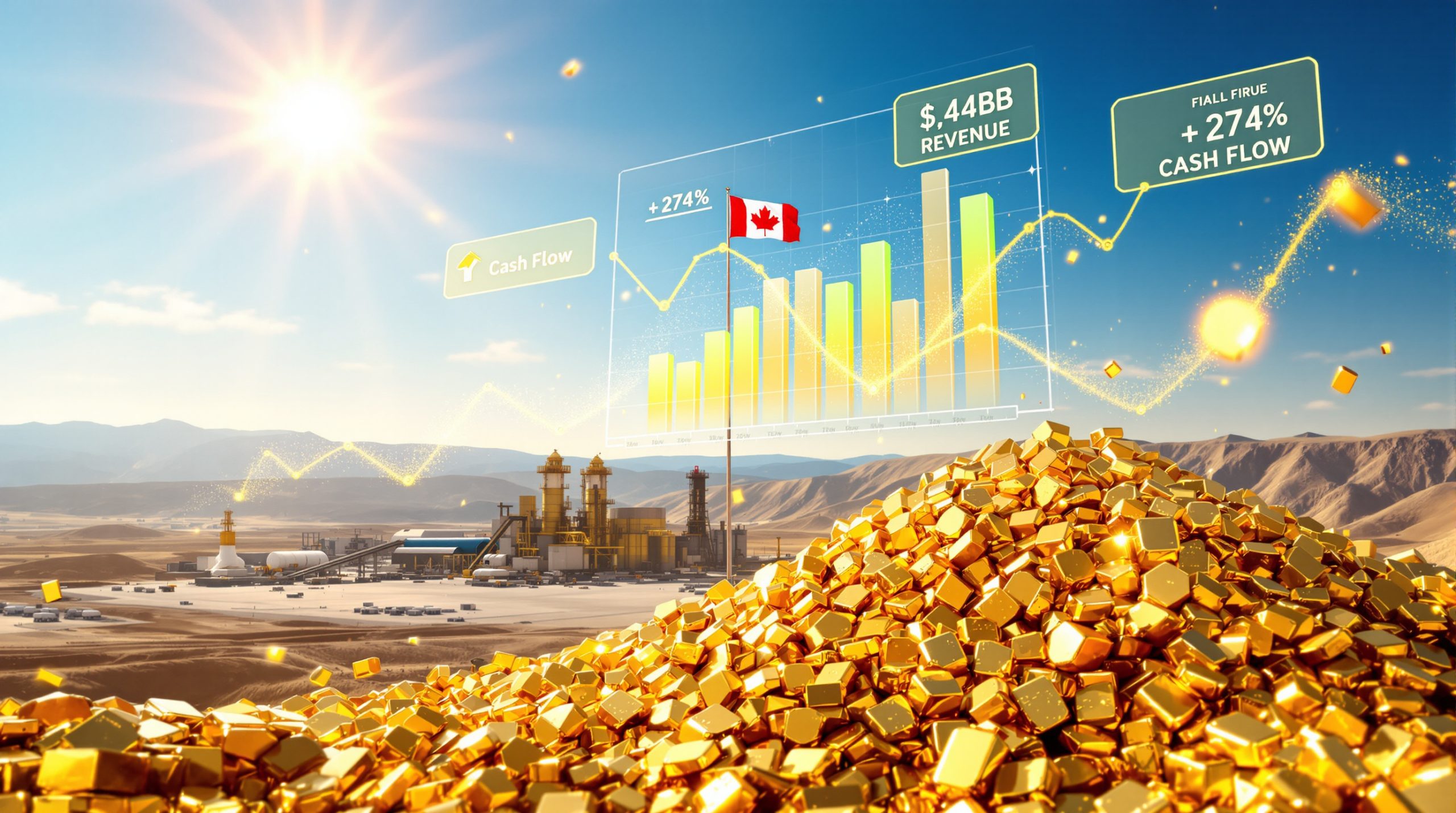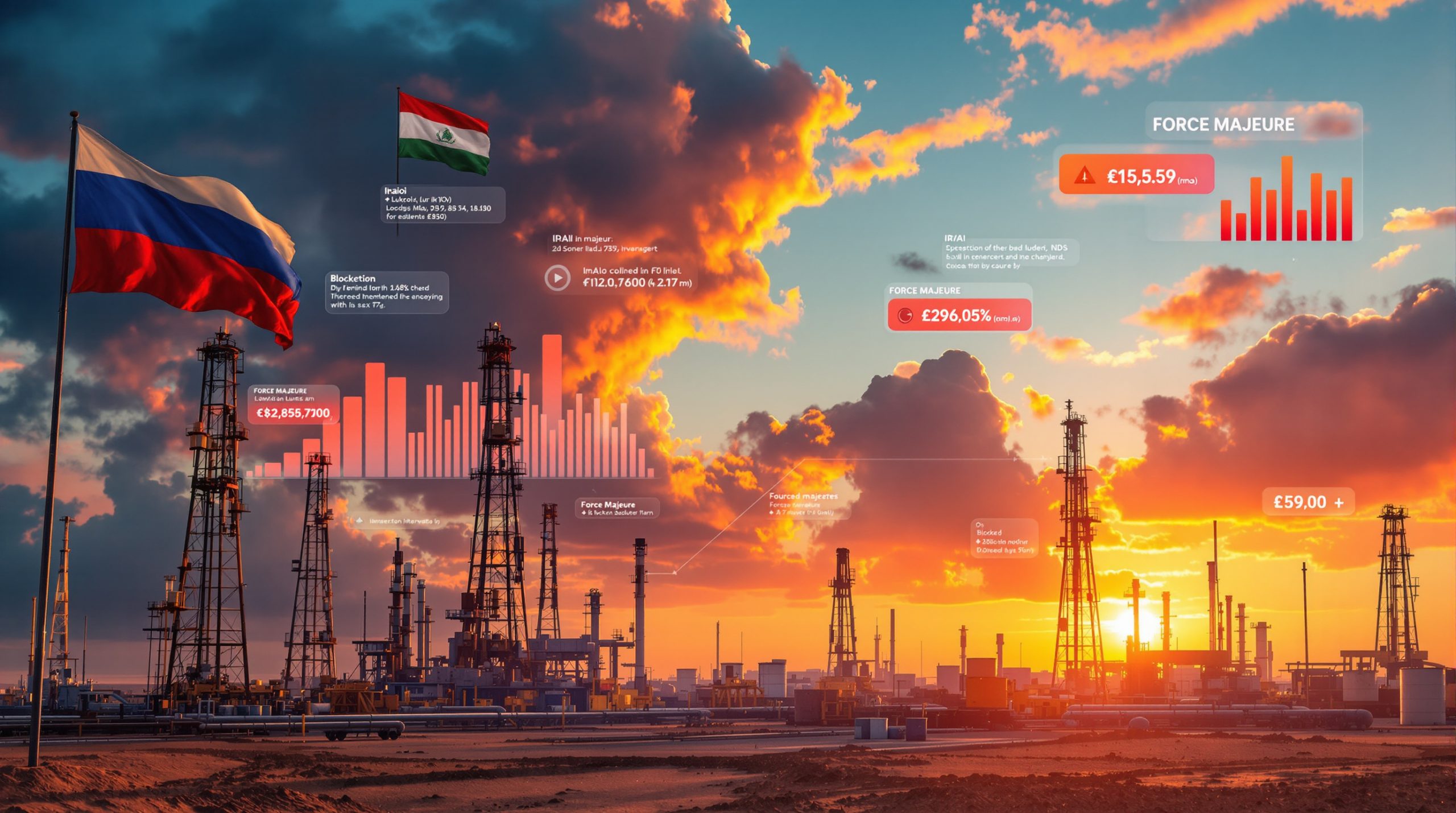The Critical Role of Copper in Electrification Infrastructure
With global electrification accelerating at an unprecedented pace, copper has emerged as the indispensable metal powering this transformation. From renewable energy systems to electric vehicles and grid infrastructure, copper's unique properties make it the backbone of our electrified future.
Why Is Copper Essential for Modern Electrification?
Copper stands as the backbone of global electrification efforts, serving as an irreplaceable conductor in power generation, transmission, and consumption systems. Its exceptional electrical conductivity—second only to silver among commercially viable metals—enables efficient energy transfer with minimal losses. This fundamental property makes copper the material of choice for electrical infrastructure worldwide, from power stations to the final connection points in homes and businesses.
The Superior Properties That Make Copper Irreplaceable
Copper possesses a unique combination of properties that make it virtually irreplaceable in electrical applications:
- Unmatched conductivity allowing 97% efficiency in electrical transmission
- Exceptional durability with a lifespan exceeding 30 years in most applications
- Corrosion resistance that minimizes maintenance requirements
- Malleability and ductility enabling formation into complex shapes and thin wires
- Thermal conductivity that dissipates heat effectively in high-power applications
These properties combine to create a material that performs reliably under the demanding conditions of modern electrical systems, from high-voltage transmission lines to microscopic connections in electronic devices.
Beyond Electrical Applications: Copper's Versatility
Copper's utility extends beyond simple conductivity. The metal's antimicrobial properties make it valuable in healthcare settings, while its heat transfer capabilities are essential in thermal management systems. Additionally, copper's recyclability supports sustainability goals, with recycled copper retaining 100% of the electrical conductivity of newly mined material.
This combination of electrical performance and supplementary benefits makes copper uniquely positioned to support the multi-faceted requirements of modern infrastructure development.
How Is Copper Driving the Global Electrification Revolution?
The worldwide shift toward electrification represents one of the most significant infrastructure transformations in modern history. This transition encompasses renewable energy generation, grid modernization, electric vehicle adoption, and digitalization of industrial processes—all sectors where copper plays a crucial role.
The Netherlands Case Study: When Infrastructure Can't Keep Pace
A striking example of electrification challenges comes from the Netherlands, where over 11,900 businesses currently wait for electricity connections because the grid cannot handle increasing demand. The mayor of Eindhoven has highlighted the need for 100 new medium-sized substations and 4,000 smaller ones just to meet current requirements in this single city. Each substation requires substantial copper content, illustrating the massive scale of copper demand for basic infrastructure upgrades.
"Everything is going electric and electricity infrastructure needs to grow massively everywhere." – Mayor of Eindhoven
This situation isn't unique to the Netherlands but represents a preview of challenges facing developed economies worldwide as electrification accelerates. The backlog of connection requests demonstrates how rapidly electrification demand can outpace infrastructure development, creating potential bottlenecks across industrial sectors.
Quantifying Copper's Role in Key Electrification Sectors
The scale of copper required for modern electrification is staggering when viewed across major application sectors:
| Electrification Component | Copper Content | Growth Projection (2025-2035) |
|---|---|---|
| Electric Vehicle | 83 kg (vs 23 kg in conventional vehicles) | 300% increase in annual demand |
| Wind Turbine (3MW) | 4.7 tonnes | 250% capacity expansion globally |
| Solar PV Installation (1MW) | 3.1 tonnes | 200% installed capacity growth |
| Data Center (Tier III) | 0.9 tonnes per MW of IT load | 180% expansion in computing power |
| Grid Infrastructure | 5,000-8,000 tonnes per GW of new capacity | 150% increase in transmission capacity |
These figures illustrate not only the copper-intensive nature of modern energy systems but also the compounding effect as multiple sectors simultaneously increase their copper requirements. The convergence of these growth trajectories creates unprecedented demand pressure on copper supply chains.
What Makes Copper Demand Different in the Electrification Era?
The current copper market signals a fundamental shift from historical patterns. After years of sub-trend demand growth, multiple indicators suggest we're entering a period of sustained above-trend consumption spanning decades rather than quarters or years.
Structural Factors Driving Long-Term Demand
Unlike cyclical demand patterns of the past, today's copper market is driven by structural changes in how the world generates, transmits, and uses energy:
- Renewable energy expansion requiring 5-12 times more copper per megawatt than conventional power
- Electric vehicle adoption using 3-4 times more copper than internal combustion engines
- Grid modernization necessitating massive copper investments in transmission and distribution
- AI and data center growth creating new copper-intensive computing infrastructure
- Urbanization in developing economies requiring comprehensive electrical infrastructure
These factors represent permanent shifts in technological architecture rather than temporary market conditions, suggesting persistent demand growth over decades rather than years.
The Electrification Multiplier Effect
Each electrification initiative creates cascading copper requirements throughout the supply chain. For example, electric vehicles not only require copper in the vehicles themselves but also in charging stations, grid upgrades to handle increased load, and the renewable energy infrastructure needed to power them sustainably.
This multiplier effect means that headline statistics on copper content in end products substantially understate the total system requirements. A single electric vehicle with 83kg of copper might ultimately drive total system demand exceeding 200kg when all infrastructure dependencies are considered.
How Are Global Trade Policies Affecting Copper Markets?
Recent trade policy developments have created significant market disruptions without fundamentally altering supply-demand dynamics. The most notable example involves tariff policies creating dramatic arbitrage opportunities between US and international markets.
Understanding Price Divergence and Market Arbitrage
The price spread between COMEX (US) and London Metal Exchange copper has expanded from typical levels of 6-7 cents per pound to 70-80 cents—the widest gap in recent memory. This divergence reflects inventory shuffling rather than genuine scarcity signals, creating temporary market distortions without addressing fundamental supply constraints.
These price differentials have created significant arbitrage opportunities for traders, but they mask underlying supply challenges rather than solving them. The artificial price signals risk misdirecting investment capital toward short-term inventory management rather than long-term production capacity.
The US Copper Processing Deficit
The United States faces structural challenges in copper processing that tariffs alone cannot resolve:
- US mines produce approximately 1.1 million tons of copper annually
- Domestic refining capacity handles only 850,000 tons
- This forces exports of 320,000 tons of concentrates to overseas smelters
- Chinese facilities now control over 50% of global processing capacity
Building competitive domestic smelting capacity would require massive capital investment, guaranteed ore supplies, and cost structures that can compete with established international operations—conditions that don't currently exist despite political support for domestic processing.
This processing capacity deficit highlights the complex supply chain realities that trade policies often fail to address, with physical metal flows constrained by industrial capacity limitations rather than simply price considerations.
How Are Regulatory Reforms Changing the Copper Development Landscape?
While trade policies create short-term market distortions, regulatory reforms in key copper-producing regions are addressing fundamental development constraints. Chile, the world's largest copper producer, has implemented the most comprehensive mining reforms in decades.
Chile's Mining Modernization Initiative
Chile's recent legislative changes modify over 40 industry regulations with the specific goal of eliminating bureaucratic bottlenecks that previously extended project approvals to 12 years. The reforms target:
- Streamlined permitting for environmentally sensitive areas (high-altitude locations near glaciers and national parks)
- Balanced regulatory frameworks maintaining environmental standards while accelerating approvals
- Simplified technical requirements that previously created unnecessary delays
Economy Minister Nicholas Grau emphasized the importance of maintaining "regulatory rigor" while "drastically shortening licensing timelines" to unlock billions in stalled investment.
These reforms recognize the strategic importance of copper to Chile's economy while addressing legitimate environmental concerns through smarter regulation rather than simply reducing oversight.
Argentina's Complementary Approach
Argentina has implemented similar reforms, simplifying investment procedures that previously required over 1,000 data fields—many lacking clear legal foundation. The new system establishes single-window processing to replace overlapping bureaucratic requirements, though Argentina faces cultural challenges that Chile has already overcome:
- Chile's economy has historically centered on mining, creating broad public acceptance
- Argentina's agricultural tradition means mining lacks the same cultural foundation
- This creates potential for local resistance despite federal support
The contrasting experiences of these neighboring countries highlight how regulatory reform requires both technical improvements and cultural acceptance to successfully accelerate project development.
What Role Does Exploration Play in Meeting Future Copper Demand?
Exploration success represents a critical component of the copper supply equation. Recent drilling results across multiple jurisdictions demonstrate significant potential for new discoveries and resource expansion. The copper exploration importance cannot be overstated as the world transitions to renewable energy sources.
Notable Recent Exploration Successes
Recent exploration programs have delivered remarkable results across multiple jurisdictions:
| Company | Key Intercept | Project Location | Market Impact |
|---|---|---|---|
| NGX Minerals | 105m at 3% copper + 15g/t gold | Luna Project | Market cap reached C$3.5 billion |
| Marimaca Copper | Ultra-high-grade mineralization over 1km | Pampa Medina, Chile | Market cap doubled to $800 million |
| ATEX Resources | 1.4km mineralization above 0.3% copper | Chile | Strong share price performance |
| Fitzroy Minerals | 110m at 1.94% copper | Bueniro, Atacama Desert | Significant share price gains |
| Meridian Mining | Feasibility study showing $984M NPV | Brazil | Trading at 80% discount to NPV |
These results highlight both the geological potential for new copper discoveries and the market's selective approach to valuing exploration success based on jurisdiction, management quality, and development potential.
The NGX Minerals results are particularly noteworthy, with the company's president highlighting that the discovery of ultra-high-grade free gold in quartz veins "adds an entirely new dimension to the Luna project." Technical analysts note that these high-grade quartz gold veins represent well-known components of high-sulfidation epithermal deposit models, suggesting potential for significant resource expansion beyond current estimates.
What Challenges Does US Copper Development Face?
Despite political rhetoric supporting domestic mining, the United States faces significant structural challenges in copper development that limit its ability to reduce import dependence. However, there are still opportunities for US copper investment insight that could help address these challenges.
Regulatory and Permitting Constraints
US exploration faces substantial regulatory barriers, including:
- Environmental impact assessments required for any ground disturbance exceeding five acres on Bureau of Land Management territory
- Multi-year permitting processes covering flora, fauna, archaeology, and public consultation
- Lack of centralized geological data repositories and government-sponsored geophysical surveys
- Insufficient domestic smelting capacity limiting production potential
These constraints effectively limit exploration to major companies conducting brownfields expansion around existing infrastructure, with junior exploration companies lacking resources for multi-year permitting processes.
The absence of streamlined permitting for prospective areas creates a competitive disadvantage compared to jurisdictions like Chile that maintain environmental standards while accelerating approval timelines.
Technical and Economic Challenges
US open-pit copper mines average grades around 0.35% copper, below the global average of 0.45%, creating economic challenges in a competitive global market. Operations range from 260,000 tons annually at Morenci Copper Mine down to 41,000 tons at the Ray Mine, with these mature, low-grade assets facing increasing cost pressures.
This combination of regulatory complexity and lower ore grades creates significant barriers to new project development, limiting the country's ability to expand domestic production despite growing demand from electrification initiatives.
How Should Investors Approach the Copper Sector?
The copper market presents a compelling investment case based on long-term electrification trends, though significant valuation disparities exist across the sector. These variations create opportunities for investors willing to look beyond short-term market fluctuations and explore various copper investment strategies.
Key Investment Considerations
When evaluating copper investment opportunities, five critical factors emerge as primary determinants of project success:
- Jurisdiction selection focusing on established mining regions with streamlined regulatory frameworks
- Development stage assessment targeting advanced projects approaching feasibility or construction
- Management evaluation prioritizing teams with demonstrated execution capabilities
- Infrastructure proximity considering transportation access and power availability
- Financial structure assessing capital requirements against current market valuation
These considerations help differentiate between projects with similar geological characteristics but vastly different development potential and risk profiles.
Valuation Anomalies and Opportunities
The sector presents numerous valuation disconnects where market capitalizations fail to reflect underlying asset values:
- Meridian Mining trades at approximately 80% discount to its calculated net present value
- The company's current market capitalization sits remarkably close to its required initial capital expenditure
- This creates potential for significant value unlocking as the project advances through development phases
At the opposite end of the spectrum, exceptional exploration results can drive premium valuations, as demonstrated by NGX Minerals' C$3.5 billion market capitalization following world-class drilling results at its Luna project.
These valuation disparities create opportunities for investors to identify undervalued assets with potential for significant re-rating as development milestones are achieved or market recognition improves.
What Does the Future Hold for Copper in Electrification?
The long-term outlook for copper remains exceptionally strong despite short-term market volatility. The metal's fundamental role in electrification creates a structural demand growth trajectory that appears unlikely to change regardless of economic cycles or political developments. Recent copper price insights suggest continued strength in the market.
Key Trends Shaping Future Demand
The convergence of multiple technology transitions creates unprecedented copper demand growth potential:
- Accelerating renewable energy deployment requiring massive copper inputs
- Electric vehicle adoption curves steepening across major markets
- Grid infrastructure upgrades becoming unavoidable as demonstrated by the Netherlands case
- AI and computing infrastructure expansion creating new demand centers
- Regulatory reforms in key jurisdictions potentially accelerating new project development
These trends represent technological imperatives rather than policy preferences, suggesting they will persist regardless of short-term economic fluctuations or political leadership changes.
Supply Constraints and Development Timelines
While demand trends appear clear, supply faces significant constraints:
- New mine development typically requires 7-10 years from discovery to production
- Average copper grades continue declining in established mining districts
- Environmental and social licensing requirements becoming more complex
- Capital intensity increasing for new developments
- Water scarcity affecting operations in key copper regions
These factors suggest the potential for significant supply-demand imbalances as electrifying investments accelerate, particularly if regulatory reforms fail to meaningfully reduce development timelines.
Conclusion: Copper's Indispensable Role in the Electrification Revolution
Copper stands at the center of the global electrification transformation, with its unique properties making it irreplaceable in countless applications. The metal's conductivity, durability, and versatility ensure its continued importance as economies worldwide transition toward renewable energy, electric transportation, and digitalized infrastructure.
The investment landscape reflects both the tremendous opportunity and significant challenges facing the sector. Companies with proven management teams operating in favorable jurisdictions with advanced projects appear best positioned to benefit from copper's long-term demand growth. However, investors must carefully evaluate development timelines, capital requirements, and execution capabilities when assessing potential investments.
As electrification initiatives accelerate globally, the importance of copper in electrification infrastructure only increases. The metal that powered the original electrical revolution more than a century ago remains equally essential to the current transformation—a rare example of a material whose utility has only grown more critical with technological advancement.
Disclaimer: This article contains information about investing in copper and mining companies. The content is for informational purposes only and should not be construed as investment advice. Always conduct your own research and consult with a qualified financial advisor before making investment decisions.
Want to Discover the Next Breakthrough Copper Project?
Stay ahead of the market with Discovery Alert's proprietary Discovery IQ model, which delivers real-time notifications when significant copper discoveries are announced on the ASX. Explore historic returns from major mineral discoveries and begin your 30-day free trial today at https://discoveryalert.com.au/discoveries/.




